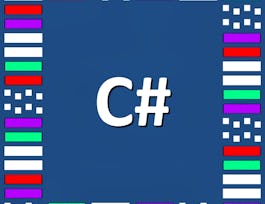Welcome! This course is an introduction to the primary concepts of gaming, and an exploration of how these basic concepts affect the way gamers interact with our games. In this course you will understand what defines a “game” and the mechanics and rules behind different types of games. Through four linked assignments you'll learn ways to create and describe a game concept, and specifically what makes a compelling game. This course focuses on the conceptual underpinnings of games, and all assignments can be completed with a pencil and paper – no previous programming knowledge is required.



Introduction to Game Design
This course is part of Game Design: Art and Concepts Specialization

Instructor: Fran Krause
Sponsored by Mojatu Foundation
120,423 already enrolled
(2,838 reviews)
Details to know

Add to your LinkedIn profile
See how employees at top companies are mastering in-demand skills

Build your subject-matter expertise
- Learn new concepts from industry experts
- Gain a foundational understanding of a subject or tool
- Develop job-relevant skills with hands-on projects
- Earn a shareable career certificate


Earn a career certificate
Add this credential to your LinkedIn profile, resume, or CV
Share it on social media and in your performance review

There are 4 modules in this course
This week we start at the beginning: what are the principles of very simple games, like Hangman and tic-tac-toe? How do these games work? Why do people play them? What are the elements that define games and the gaming experience? And finally, what do games have in common with each other, and what sets them apart? In addition to covering the basics and ground rules for this course, we'll conclude this week with a very simple, low-tech assignment: create a game on a single sheet of paper.
What's included
6 videos5 readings1 peer review1 discussion prompt
How does a player learn the mechanics of your game? How do they learn anything about your game? This week we will talk about the rules that define gameplay, and how those rules are communicated to your players. We also discuss the way rules are bent and broken by players.
What's included
6 videos1 peer review
How does narrative drive a player to start playing your game? Or to finish it? This week we'll look at some of the ways you can make your game more compelling with story, and discuss some of the ways story can drive gameplay forward, or enable a player to make their own way through it.
What's included
9 videos1 peer review
What purpose does an enemy serve in a game? What effect does a second player have on two-player games? Can a game work without an adversary or a final goal? We'll address all of those questions in this last week of the class, and work towards finalizing your board game project with characters.
What's included
6 videos1 reading1 peer review
Instructor

Offered by
Why people choose Coursera for their career




Learner reviews
2,838 reviews
- 5 stars
79.66%
- 4 stars
15.90%
- 3 stars
2.88%
- 2 stars
0.84%
- 1 star
0.70%
Showing 3 of 2838
Reviewed on Oct 14, 2015
Fran Krause is the best teacher. He really knows what are games, what we use them for and How make them fun!
Reviewed on Apr 12, 2020
I really loved doing this course. Learnt how to make a simple game and make it really interesting! I loved how the easily the instructor was able to teach us and make us curious throughout the course.
Reviewed on Dec 26, 2016
A very basic course to start off the game design career. Great if you want to start right from the ground stage and make your way up! Complex concepts broken down and put ever so simply! Try it out!
Recommended if you're interested in Arts and Humanities

Coursera Project Network

University of Minnesota

University of Colorado System

Open new doors with Coursera Plus
Unlimited access to 10,000+ world-class courses, hands-on projects, and job-ready certificate programs - all included in your subscription
Advance your career with an online degree
Earn a degree from world-class universities - 100% online
Join over 3,400 global companies that choose Coursera for Business
Upskill your employees to excel in the digital economy


